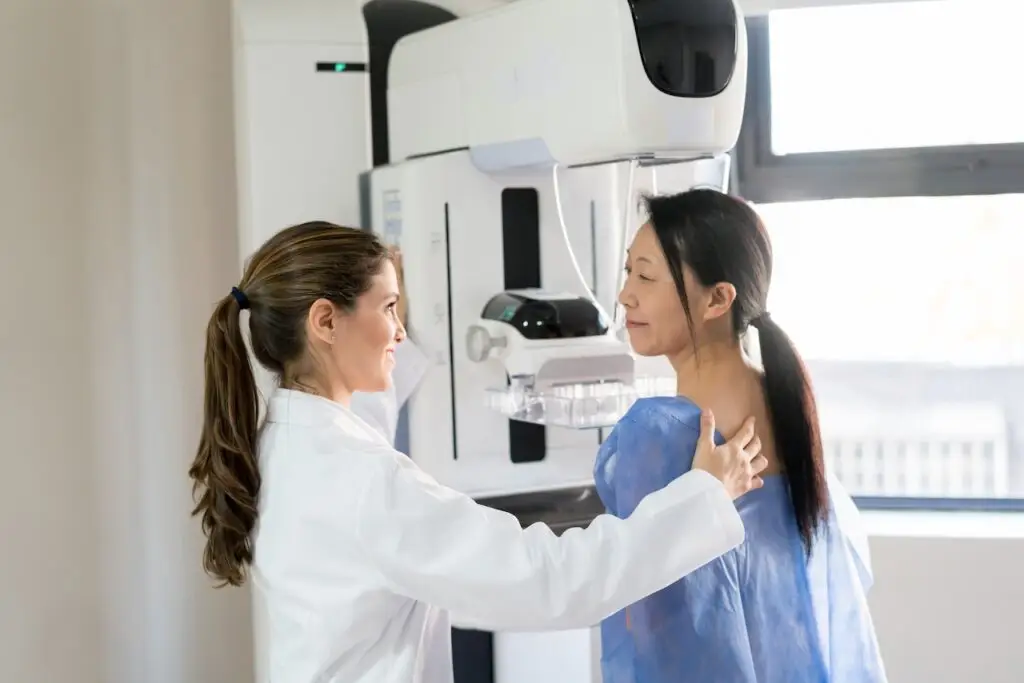A core decision almost all breast cancer patients must make is which type of breast cancer surgery is the right one for them. Breast surgery plays a critical role in eliminating the cancer burden and restoring health. Understanding the various breast cancer surgical options available is essential. In the following sections, we will delve into the details of each surgical option, discuss their indications, benefits, and drawbacks, and explore the latest advancements in breast cancer surgery. With the knowledge gained, you will be better equipped to navigate your treatment options, collaborate with your healthcare team, and take charge of your recovery process.
Lumpectomy (Breast-conserving surgery) A lumpectomy is suitable for early-stage breast cancer patients with small tumors, where the cancerous tissue can be removed while preserving the majority of the breast. The primary advantage of lumpectomy is that it conserves breast tissue, maintaining a more natural appearance. Oncoplastic surgery combines lumpectomy with plastic surgery techniques to reshape the remaining breast tissue for improved cosmetic results. The recovery time is typically shorter compared to mastectomy, and it has fewer complications. A lumpectomy is often followed by radiation therapy to eliminate any remaining cancer cells. This procedure may not be ideal for larger tumors or for patients with multiple tumors in different areas of the breast.
Evidence-based guidance powered by NCCN Guidelines®
Personalized treatment plans shaped by the latest oncology standards—tailored to your diagnosis.
Get started
View your personalized treatment plan in the Outcomes4Me app
Use your diagnosis to unlock personalized NCCN Guidelines®-aligned recommendations.
Continue in app
Mastectomy Mastectomy is recommended for patients with larger tumors, extensive ductal carcinoma in situ (DCIS), or genetic mutations (such as BRCA1/BRCA2) that significantly increase their risk of developing breast cancer. Mastectomy provides a more comprehensive removal of breast tissue, reducing the risk of cancer recurrence. This procedure involves the removal of the entire breast, which can lead to a more significant emotional impact and changes in body image. It may also require a longer recovery time and have more potential complications than a lumpectomy. Skin-sparing and nipple-sparing mastectomies preserve the breast skin, nipple, and areola for more natural-looking reconstruction results, however, these options are not always possible depending on the size and location of the tumor. Here are some of the mastectomy options that may be offered to you:
-
- Simple or Total Mastectomy: This procedure involves the removal of the entire breast, including the nipple and areola, while leaving the lymph nodes and underlying muscle intact. It is suitable for patients with larger tumors or those who cannot undergo radiation therapy.
-
- Modified Radical Mastectomy: This type of surgery removes the entire breast along with some of the lymph nodes under the arm (axillary lymph node dissection). It is often recommended for patients with invasive breast cancer.
-
- Radical Mastectomy: In this procedure, the surgeon removes the entire breast, lymph nodes, and chest wall muscles. This extensive surgery is rare and usually reserved for advanced cases or when the cancer has spread to the chest muscles.
-
- Skin-sparing Mastectomy: This technique preserves the breast skin (except for the nipple and areola) during mastectomy. It is often followed by immediate breast reconstruction, providing a smoother and more natural appearance.
-
- Nipple-sparing Mastectomy: This procedure maintains the nipple and areola while removing the breast tissue. It is suitable for selected patients with small tumors located away from the nipple. The preserved nipple and areola provide a more familiar appearance after reconstruction.
Sentinel Lymph Node Biopsy (SLNB) SLNB is used to determine if breast cancer has spread to the lymph nodes. It is typically performed alongside lumpectomy or mastectomy. New techniques, such as the use of fluorescent dyes, have improved the accuracy and effectiveness of identifying sentinel lymph nodes. SLNB allows for the removal and examination of only a few key lymph nodes, reducing the risk of complications like lymphedema. If cancer is found in sentinel lymph nodes, a more extensive axillary lymph node dissection (ALND) may be required. Axillary Lymph Node Dissection (ALND) An ALND is recommended if cancer has been found in the sentinel lymph nodes or if the patient has inflammatory breast cancer. ALND provides a more thorough assessment of lymph node involvement, which can guide further treatment decisions. This procedure has a higher risk of complications, such as lymphedema, compared to SLNB so efforts to minimize the extent of ALND and reduce complications have led to the development of targeted axillary dissection, which combines SLNB with selective removal of additional lymph nodes. Stay tuned for our upcoming blog posts, where we will explore reconstruction options, arming you with the knowledge and confidence to embrace your healing journey. Have questions about your surgical treatment plan? Use the Ask Outcomes4Me feature in our app and our team of oncology nurses will answer.
Sources:
Personalized support for real care decisions
Understand your diagnosis, explore clinical trials, and track symptoms--all in one place.
Get started
Compare treatments, prepare for appointments, and track side effects—all in the app
Built for your diagnosis, Outcomes4Me gives you the tools to make confident, informed decisions—right when you need them.
Continue in app






